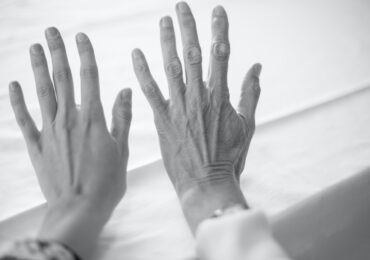It normally takes between 2-6 weeks to recover from cubital tunnel surgery. Most patients require some hand therapy to regain strength and motion. Here’s what you can expect from cubital tunnel syndrome exercises after surgery.
How Long Does it Take to Recover from Cubital Tunnel Surgery?
Cubital tunnel syndrome is a condition that occurs when the ulnar nerve becomes irritated, swollen, stretched, or compressed. It can cause numbness in the wrist, hand, and fingers. Cubital tunnel syndrome is the second most common nerve entrapment syndrome after carpal tunnel syndrome.
Recovery from cubital tunnel syndrome can vary from one individual to another. It can take some time for patients to feel like they are back to full strength. Depending on the severity of cubital tunnel syndrome and individual healing items, recovery can range between 2-6 weeks.

Do You Need to Follow Cubital Tunnel Syndrome Exercises After Surgery?
After cubital tunnel release surgery, it’s normal to feel numb in your hands and fingers as the local medication wears off. In the first couple of weeks, you should focus on healing, reducing swelling, and resting properly. Once your incisions are healed, you can start to think about physical therapy.
Most patients need to follow cubital tunnel syndrome exercises after surgery to improve their range of motion and regain strength in the affected area. In the beginning, it’s a good idea to focus on very gentle exercises to gradually improve motion and reduce swelling. The exact plan for your cubital tunnel syndrome exercises will depend on the size of your repair, activity level, and recovery.
Here are some exercises you could be asked to do after your surgery:
- Nerve gliding exercises – these exercises allow the ulnar nerve to stretch as you move through different movements.
- Range of motion exercises – an example would be moving the wrist from side to side as well as flexing and extending it.
Exercises for cubital tunnel syndrome after surgery focus on improving the range of motion around the elbow. The exercises you will be asked to perform by your doctor or hand therapist focus on very gradual and gentle movements.
Straight after your surgery, you should avoid any heavy lifting. A general rule of thumb is to avoid lifting anything heavier than a cup of coffee before your first post-op appointment. Your body needs time to heal, and it’s important that you don’t start exercises too quickly without your doctor’s recommendation.
Treatment for Cubital Tunnel Syndrome at The Harley Clinic
Treatment for cubital tunnel syndrome typically starts with more conservative measures like splinting and exercises. However, if there’s no improvement or symptoms get worse, then surgery may be required to fix the problem.
If you’re considering cubital tunnel syndrome surgery, book a consultation today at The Harley Clinic to talk about your treatment options. We offer a range of hand and upper limb treatments, including hand therapy and trigger finger release surgery.
For more information on the latest tips and advice on plastic surgery, check out our ultimate guide on Plastic Surgery Statistics.













